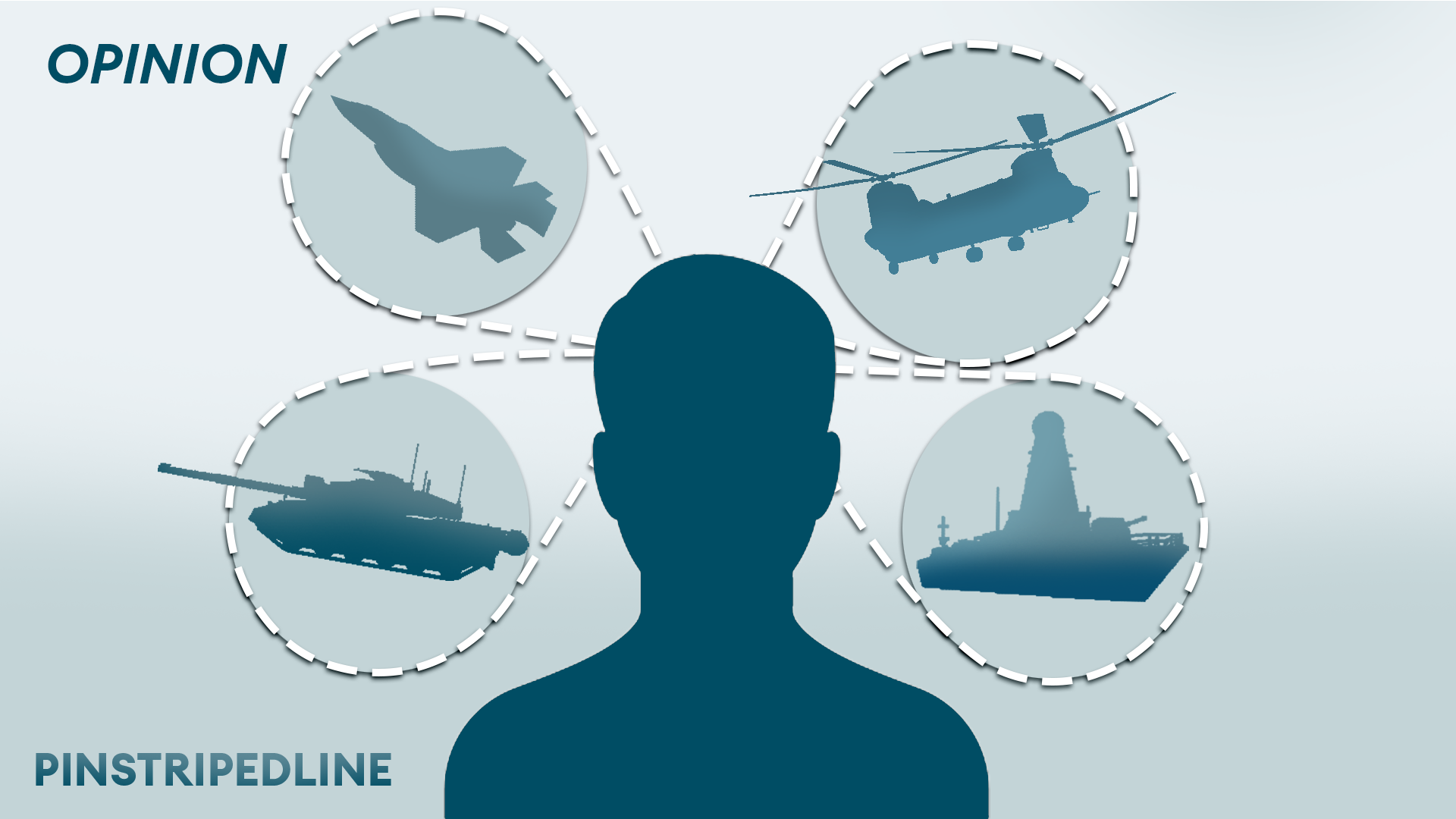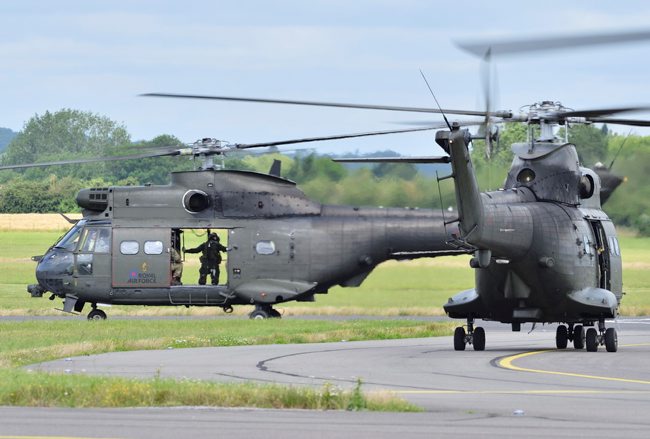
Perfect storm brewing for defence – and SDR must bolster UK's 'fight tonight' ability

The Ministry of Defence has announced significant cuts to the Armed Forces' equipment holdings, scrapping five warships and tankers, disposing of the entire fleet of Watchkeeper drones, as well as 14 Chinooks and the entire RAF Puma force without replacement.
This move is designed to save some £500m in running costs, although no jobs are being lost and money is being spent to accelerate other procurement projects.
News of these cuts has been met with frustration and surprise by many observers who are struggling to reconcile how the UK can be so keen to take an effective lead on holding Russia to account and play a leading part in Nato, while appearing not willing or able to properly fund the Armed Forces at a time when the international security situation is deteriorating rapidly.
The reasons for these cuts are complex, but boil down to there being an insufficient level of funding within the MOD to meet all the many commitments that it has.
A combination of high inflation, unexpected cost growths in projects due to exchange rate fluctuation and the general increase in operating costs means that the MOD faces enormous financial challenges.

MOD making painful, but practical decisions
Every penny counts and all options are up for consideration in a fight to make the books balance.
By choosing to scrap ships, drones and aircraft fleets, the MOD has taken the most painful but arguably practical outcome.
It is hard to save money without losing entire capabilities – paying off a ship class allows for the disposal of spares holdings, support contracts and other associated costs, generating a lot of wider savings.
Removing an aircraft fleet from service permits a significant reduction in training courses, allows the closure of airfields and so on.
It also frees up a lot of people who can be redistributed to other units that are short of people, trying to address some of the wider headcount problems caused by a military that is increasingly undermanned.
In the short term then, these decisions will help solve financial problems and make it easier for the MOD to live within its means.
A pretend capability that may look impressive in harbour but which soaks up money and cannot be used, is arguably not a real capability and builds a false sense of security.
There is no point in having a military that on paper looks impressive, but which cannot afford the full range of spares, munitions and support to be used properly.
The frustration that many supporters of the military feel though is that this is not the first time this has occurred and that the story of UK defence appears to be a constant and relentless set of in-year measures to make the sums add up, resulting in a significant overall decline of fighting power, but done to fix internal financial problems, not as part of a coherent strategy.
Is there a proper long-term strategy out there though, or will this continue?

Focusing on Nato
The MOD's hopes are resting on the Strategic Defence Review that is currently underway and the expectation that this will bring a new sense of policy direction on what the department should prioritise.
Previous reviews have attempted to straddle a line that saw the UK seeing itself both as a Nato power, but also with a not inconsiderable ability to project power globally as part of its national interest.
This has resulted in what has become an increasingly unbalanced military, forced to balance off being able to deter Russia, while also being able to operate in the Indo-Pacific region.
The review is expected to focus far more attention on Nato and reiterate that the primary focus for the Armed Forces is to prevent Russia from posing a threat to the UK.
This will call for a military that will more closely resemble the force structure of the 1980s or early 1990s, with emphasis on fighting in contested airspace or against nuclear submarines in the North Atlantic and against highly capable opponents, using equipment that is often as good as, if not better than, our own.
The days of Op Telic or Herrick where the UK and allies could count on being able to overmatch their opponents in both qualitative and quantitative terms are gone.
What matters now is funding and fielding a military that can credibly deter a serious opponent across all domains.
The plan therefore is likely to see significant reductions in discretionary activities and equipment that doesn’t support this goal.
It seems likely that much of what the MOD does globally may be pared back, with resources focused on Nato over other operations.
What this may also mean is that the MOD chooses to free up funding in some areas, to accelerate the introduction to service of new equipment or technology by scrapping other equipment early.
For an entirely hypothetical example, the Royal Navy's Type 23 frigates are now extremely old, and increasingly fragile.
Keeping them in service would absorb huge amounts of money to pay for life extensions, refits and maintenance, and people who could be used instead on the Type 26 and 31 projects to bring them into service more quickly.
There would be a short-term capability gap, but it would mean a marked capability increase far more quickly than previously planned.
The SDR plan then is likely to focus on these sorts of trade-offs, accepting a need to let go of older, nearly life-expired equipment and plough the resources saved back into accelerating the introduction of new equipment.

On paper vs reality
On paper, this makes good sense, but it carries some risk. For starters, it creates a gap that others need to fill.
At a time when the risk is increasing, few Nato allies will welcome the UK reducing its military capability, as this both increases the risk to the alliance and creates expectations that other nations will need to cover the gap.
Also, there is no certainty that this kit will ever end up in service – given the wider financial problems of the MOD, and the technical problems experienced in delivering often very complex new equipment. The replacements may be heavily delayed to save money, or never enter service.
The result is both a capability gap and a lack of a long-term replacement – the worst of both worlds.
Reputationally, the risk for the MOD is that its cupboard is increasingly bare when it comes to the capabilities that it can offer.
In recent years, the RAF has scrapped the Tornado, Hawk T1, C-130J, Sentry and Sentinel and other aircraft fleets years ahead of planned out-of-service dates, leaving gaps while their replacements are either not operationally ready (A400M) or even not built (E7 Wedgetail).
Similarly, the Army has effectively removed the vast bulk of its operational capability from service, shedding tanks, artillery pieces and APCs as well as lots of ammunition to donate to Ukraine.
The result is that there are reportedly huge gaps in the ability of the Army to deploy and sustain a credible fighting force on operations, while replacements like Ajax are years behind schedule.
The Army is impressive on paper, but its physical capabilities are vastly reduced compared to even a few years ago.
Perfect storm brewing for defence
There is a perfect storm brewing where, for good financial reasons, the Armed Forces have taken hits to save money, prioritise investment and try to protect key assets.
But it has come at the cost of a significant reduction in UK military capabilities – for example the Navy's escort fleet of destroyers and frigates, which used to be the second largest in Nato, now ranks behind France and is barely the same size as Italy, Spain and Canada.
While new ships are on the way, the fleet has been pared to the bone.
Charting a path forward for the services, which sees them emerge from the SDR process with a credible funded plan that meets Nato needs and ensures that further defence cuts are unlikely to be necessary, is vital to provide reassurance both to the military and to Nato allies who otherwise may perceive the UK to be an increasingly unreliable or valuable partner.
The UK has long placed huge prestige and importance on the senior role it holds in Nato but it needs to show that it has a credible plan for regenerating national defence capabilities and being ready to meet the new threat posed by Russia and its allies.
At the end of the Cold War, the UK Armed Forces were more than 300,000 strong, operating dozens of warships, hundreds of fast jet combat aircraft and a near corps-sized formation to deter Soviet aggression, underpinned by nuclear capabilities.
Over the last 30 years, these capabilities and people have repeatedly been cut back to a fraction of the size, and capability, that they once were.
The challenge the SDR needs to help meet will be to deliver the new capabilities, people and equipment, while working with industry to increase the production of munitions, and take steps to restore the UK's ability to "fight tonight".
@PinstripedLine is an esteemed defence and security blogger, providing expert insight and analysis.









